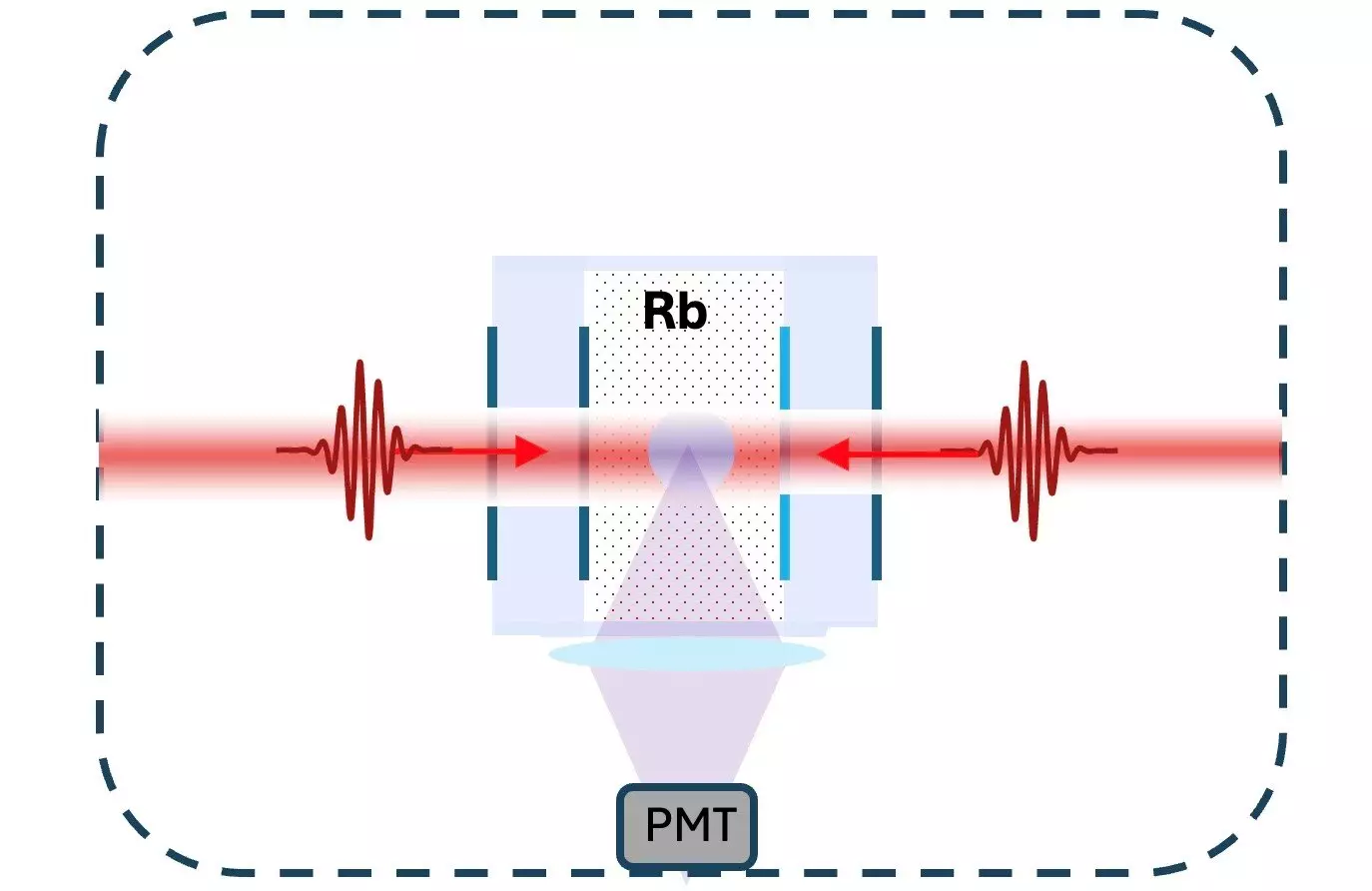The realm of precision timekeeping has recently witnessed remarkable advancements, thanks to groundbreaking research in optical atomic clocks. These devices, which once required intricate setups and cryogenic temperatures, have been transformed through an innovative approach that employs a single laser. This shift not only diminishes the complexity of atomic clocks but also renders them more compact and viable for practical applications in everyday life.
Jason Jones, a leading researcher at the University of Arizona, emphasized the developments in atomic clock technology over the past two decades, stating that many of the latest innovations remain confined to laboratory settings. The challenge has been to adapt these sophisticated systems for real-world applications. The research team’s solution lies in a new design that harnesses the capabilities of a single frequency comb laser. This laser serves a dual function as both the timekeeping mechanism and the system that tracks time, thereby reducing the overall size and intricacy of the atomic clock.
The conventional atomic clock design typically entails multiple lasers that interact with atoms to measure time with high accuracy. Jones and his team’s approach simplifies this to a single laser, a significant milestone in making atomic clock technology more accessible. This transformation could lead to a wider adoption of high-performance clocks in various sectors, including telecommunications, navigation, and even household applications.
Central to the success of this new technology are frequency combs, which are lasers that emit a spectrum of thousands of evenly spaced frequencies. These frequency combs have revolutionized high-precision measurements, especially in atomic physics. In their published work, the research team detailed how their optical atomic clock utilizes a frequency comb to directly induce a two-photon transition in rubidium-87 atoms. This method not only retains the precision of traditional optical atomic clocks that utilize dual lasers but also opens the door to enhancing technologies such as the GPS network.
The implications of this research extend far beyond simplistic timekeeping. By improving the accessibility of atomic clock technologies, the need for advanced GPS systems could escalate, enhancing navigation services globally. Moreover, the potential exists for multiple users to engage in simultaneous telecommunications, significantly optimizing data transmission rates. Such capabilities could redefine how we interact with technology, particularly in the ever-evolving landscape of digital communication.
Traditionally, achieving stable atomic clock performance necessitated maintaining atoms at temperatures close to absolute zero to minimize thermal motion. This requirement has posed significant challenges, particularly in implementing these systems in everyday settings. The researchers’ innovative utilization of two-photon transitions circumvents the need for such extreme temperatures. Rather than energizing rubidium atoms with a single photon, the clock design allows for the absorption of two photons sent from different directions. The opposite effects on atomic motion thus get canceled out, permitting the use of atoms at around 100°C—a feat unthinkable in traditional clock designs.
This breakthrough in managing atomic motion while still achieving high-precision measurement underscores the ingenious nature of the research. By utilizing a frequency comb from which photons of varying colors are sent, the team can effectively recreate the conditions necessary for exciting atomic transitions without the cumbersome requirement of a single-color laser.
As the team continues to refine their optical atomic clock, the goal is not only to optimize performance and stability but also to explore its integration into other atomic transitions for which conventional lasers may not provide adequate performance. The current results—exhibiting low instability rates that mirror traditional clocks—have laid a solid foundation for future exploration.
Through their pioneering work, the researchers are poised to bridge the gap between advanced atomic clock technology and its practical utilization in daily life. Should the development of these clocks proceed as anticipated, we may find ourselves on the cusp of a new era of timekeeping—one where precision is no longer the exclusive realm of laboratories and specialized applications but rather an integral part of our everyday lives.
The advent of a simplified optical atomic clock stands as a testament to human ingenuity. These advancements not only suggest a future filled with enhanced accuracy in technology but also promise significant changes in how we communicate, navigate, and interact with the world around us. As research continues, the potential for high-performing atomic clocks to become commonplace cannot be overstated.


Leave a Reply